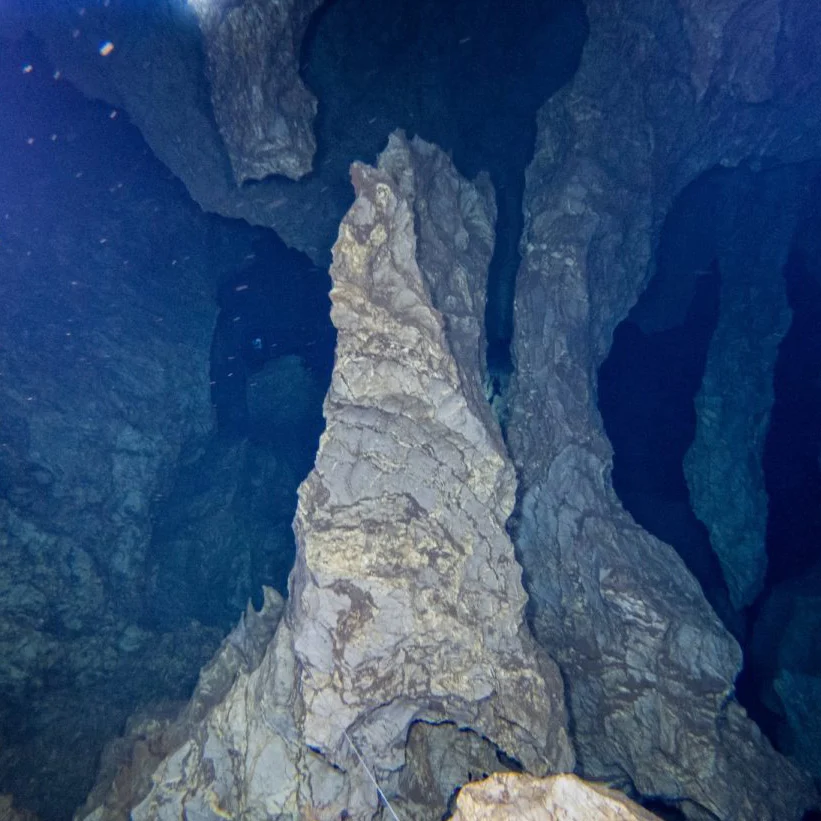Sintzi Cave Tragedy: How George Terezakis’s Final Dive Ended in Disaster


| Incident Location | Diver Full Name |
|---|---|
| Sintzi Cave, Arcadia, Greece | George Terezakis |
On May 26, 2013, a fatal accident occurred in the deepest cave in Greece. George Terezakis, a young and passionate diver, descended into its depths alongside his team on a Sunday afternoon. As the dive concluded, everything appeared normal, but for unknown reasons, George suddenly lost consciousness. His disappearance left his team, family, and friends searching for answers amid the harsh reality of the situation.
This event is known as the 2013 Sintzi Cave disaster in Athens, Greece.
About George Terezakis
George Terezakis was known for his remarkable, open-hearted nature, always smiling, giving, and sharing. As a recent addition to the CELAS Diving Club, his enthusiasm and motivation set him apart. At just 25 years old, many believed George would evolve into an exceptional cave diver.
He loved exploring underwater caves and was particularly fond of using his rebreather diving gear, which opened new horizons for his diving adventures.
Location and History of Sintzi Cave
The Sintzi Springs are located five kilometers from the town of Kandila, at an altitude of 700 meters, surrounded by the Arcadian mountains. Nestled at the end of a beautiful valley filled with cultivable areas, these springs have attracted cave divers and speleologists since 1990.
Several important expeditions have been carried out here, notably with the assistance of the Hellenic Speleological and Exploration Club and its divers. One milestone dive in 2009 reached a depth of 153 meters, making it the deepest cave in Greece and one of the deepest in Europe.
Record-Breaking Expeditions
The most significant expedition to date was the 2015 Sintzi Cave Expedition, where diver Fontads Pizza Nilis reached an incredible depth of 186 meters, surpassing the previous record set by Giorgos Trevellas. This proved that the cave is even deeper than previously thought.
The habitat seen in various videos was set up by the speleo club in earlier expeditions and was utilized during the 2015 dive.
Cave Conditions and Morphology
The water inside Sintzi Cave is fresh, with temperatures ranging between 10 to 12 degrees Celsius. Visibility is generally very good but varies with the season and rainfall, which affects water flow and clarity.
The cave’s morphology includes a rambling area with rocky surfaces carved by thousands of years of flowing water, creating smooth, curved formations.
The Fatal Dive: Equipment and Setup
On May 26, 2013, the CELAS Diving Club arrived at Sintzi Cave for a series of dives preparing for further exploration as part of a larger research project.
George Terezakis played a vital role as a support diver, equipped with Megalodon rebreathers. Specifically, George used an axial scrubber, which sits inside a canister and requires being pulled up by a finger to retrieve—a small inconvenience many divers accept.
To make this process easier, George attached two small cords, one at each end of the scrubber canister. The cords were precisely measured to fit over two O-rings on the canister’s head.
Equipment Malfunction and CO2 Buildup
During the insertion of the scrubber, a thin line inadvertently slipped between the scrubber and the head O-ring, creating a small gap. This gap allowed a slight carbon dioxide (CO2) bypass.
Though minimal, the bypass caused CO2 levels to slowly and cumulatively increase throughout the dive.
“No pre-dive test or checklist could detect this problem, and a simple pre-breathing test wouldn’t have been long enough to notice the issue.”
The Dive and Incident Timeline
Shortly after 1 PM, the four cave divers split into two groups. George’s group descended to approximately 60–62 meters, penetrating a cave corridor for about 400 meters. Meanwhile, the other group remained at depths between 10 and 12 meters.
The dive lasted nearly two hours. Forty minutes in, CO2 levels rose dangerously high, causing George to suddenly lose consciousness. This condition, known as hypercapnia, occurs when excessive carbon dioxide accumulates in the body.
Understanding Hypercapnia in Diving
Hypercapnia symptoms include:
- Dizziness
- Confusion
- Headache
- Increased breathing rate
If untreated, it can lead to unconsciousness or even death.
At the time of the accident, George was decompressing at 14 to 15 meters depth. He was spotted within seconds by his team, but he was completely unresponsive and not breathing.
Rescue Attempts and Aftermath
George was quickly moved into a nearby habitat chamber within the cave, where attempts to revive him failed.
Realizing they could not save him, the team exited the cave to seek help. After two recovery attempts, George’s lifeless body was recovered at dawn the following Monday.
His funeral was held on May 28, 2013, at Kai Sariani Cemetery, solemnizing his memory.
Legacy and Memorial
Today, an annual memorial service honors George Terezakis in the heart of Athens, within the walls of St. George’s Church, located in the courtyard of the Acropolis Museum.
May he rest in peace.
| Aspect | Details |
|---|---|
| Dive Location | Sintzi Cave, near Kandila, Greece |
| Depth Reached | Approximately 60–62 meters (during fatal dive) |
| Water Temperature | 10–12°C |
| Visibility | Generally very good, varies with seasons |
| Diving Gear Used | Maglet rebreather with axial scrubber |
| Equipment Malfunction | CO2 bypass caused by gap in scrubber O-ring |
| Cause of Incident | Hypercapnia due to slow CO2 buildup |
